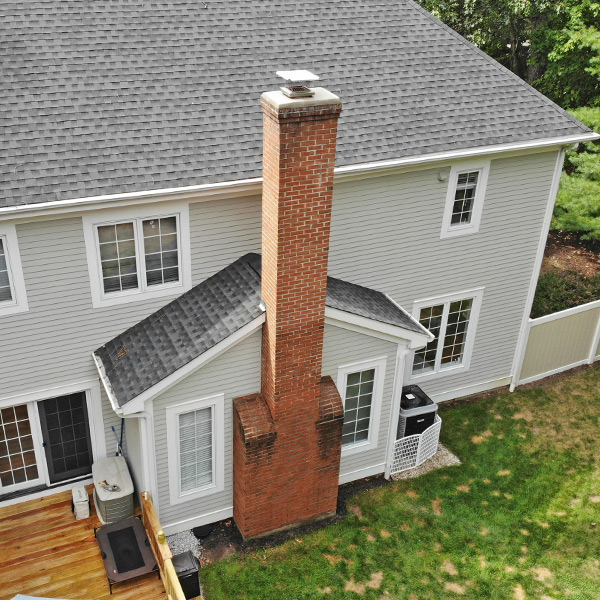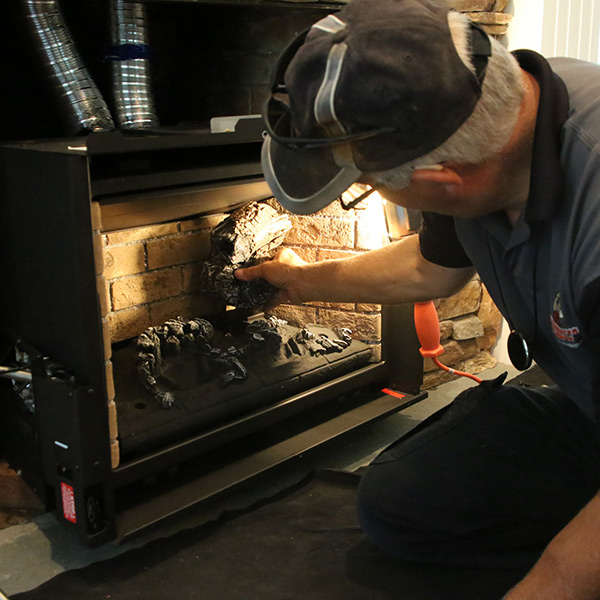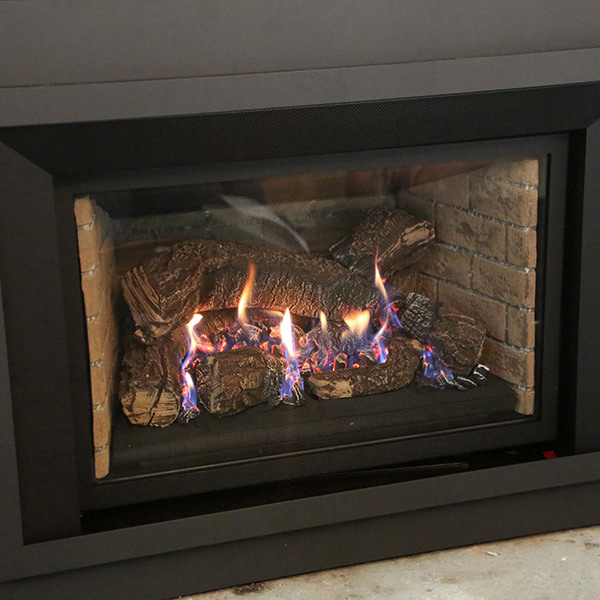Insects invading your chimney and fireplace can be a real nuisance. Not only do they create unsightly messes, but they can also pose health risks and damage your chimney’s structure. In order to maintain a clean and safe fireplace experience, it’s important to take preventative measures to keep bugs at bay.
The chimney and fireplace specialists at Lindemann know exactly what it takes to keep out the creepy crawlers. We’ll share tips on how to keep your chimney and fireplace bug-free so you can enjoy a cozy fire without any unwelcome guests.
Perform Regular Chimney Inspections and Cleanings
One of the best ways to prevent bug infestations in your chimney and fireplace is to schedule regular inspections and cleanings. A professional chimney sweep can identify and remove debris, nests, and insects, ensuring your chimney is in optimal condition. It’s recommended to have your chimney inspected and cleaned at least once a year, preferably before the cold season begins.
Install a Chimney Cap Or Damper
A chimney cap serves as a barrier to prevent insects, birds, and other debris from entering your chimney. Installing a cap can significantly reduce the chances of insects making their way into your fireplace. When selecting a chimney cap, be sure to choose one that is properly sized for your chimney and made from durable materials like stainless steel or copper.
Similar to a chimney cap, you may also choose a chimney top damper such as the Energy Top or Energy Top Plus. These dampers close tightly over a “refrigerator type” rubber seal when closed. When opened the fireplace is usually in use and the smoke and temperatures exiting the chimney are usually enough to deter insects and animals.
Seal Cracks and Gaps
Insects can easily enter your chimney and fireplace through cracks and gaps in the structure. Regularly inspect your chimney, fireplace, and surrounding areas for any signs of damage. Use caulk or other sealants to close up these potential entry points, ensuring a tighter seal against insects.
Keep the Hearth Area Clean
A clean fireplace and hearth area are less attractive to insects looking for a home. Regularly remove ashes and debris from your fireplace, and keep the surrounding area clean and clutter-free. This will not only help deter insects but also contribute to a safer and more enjoyable fireplace experience.
Store Firewood Properly
Firewood can harbor insects and provide an ideal breeding ground for them. To minimize the risk of bringing bugs into your home, store firewood at least 20 feet away from your house and keep it elevated off the ground. Always inspect the wood before bringing it inside to ensure it’s bug-free.
Use Insect Repellents
Insect repellents can be an effective tool for keeping bugs away from your chimney and fireplace. There are both natural and chemical repellents available, such as citronella candles or insecticide sprays. When using repellents, be sure to follow the product instructions carefully and use them in a well-ventilated area.
Maintain Your Home’s Exterior
A well-maintained exterior can help prevent insects from entering your home and finding their way to your chimney. Regularly inspect and repair any damaged siding, trim, or roofing materials. Additionally, keep gutters and downspouts clean and free of debris to discourage insects from nesting.
Eliminating an Existing Infestation
If bugs have already invaded your home, then you start by eliminating the current infestation before moving forward with the preventative measures we’ve outlined. To first determine if there are insects within the flue, shine a flashlight up the space to illuminate the area and scan the walls for signs of infestation. Live bugs, eggs, and nests may be noticeable from below.
Remediation Steps
If you discover bugs in your chimney or fireplace, it’s essential to address the issue promptly to prevent further infestation and potential damage. Here are some steps you should take:
- Identify the type of insects: Start by identifying the type of bugs that have invaded your chimney or fireplace. Common insects include bees, wasps, ants, and termites. This will help you determine the best course of action for removal and prevention.
- Remove the insects: For some insects, such as bees and wasps, it’s best to call a professional pest control service to remove them safely and humanely. For other insects like ants or termites, you can use insecticides, but make sure to follow the product instructions carefully.
- Clean the fireplace and chimney: Thoroughly clean the fireplace and hearth area, removing any debris or nests left behind by the insects. Schedule a professional chimney cleaning to ensure that the chimney is free of any remaining insects, nests, or debris.
- Inspect and repair: Examine your chimney, fireplace, and surrounding areas for any cracks, gaps, or damage that may have allowed the insects to enter. Seal any openings and repair any damage to prevent future infestations.
- Install a chimney cap: If you don’t already have one, install a chimney cap to prevent insects, birds, and debris from entering your chimney. Ensure it’s properly sized and made from durable materials.
- Implement prevention measures: Follow the tips mentioned previously, such as keeping the hearth area clean, storing firewood properly, and maintaining your home’s exterior.
- Monitor the situation: After addressing the infestation, keep a close eye on your chimney and fireplace for any signs of re-infestation. Regular inspections and maintenance can help you catch potential issues before they become significant problems.
Conclusion
By following these tips, you can effectively keep your chimney and fireplace bug-free, ensuring a cleaner, safer, and more enjoyable experience. Remember, regular inspections and cleanings, proper firewood storage, and attention to your home’s exterior are all essential steps in maintaining a bug-free chimney and fireplace.
So, don’t wait – start implementing these suggestions today for a more enjoyable and worry-free fireplace experience.
 What is the role of both?
What is the role of both? The biggest difference between a chimney and a vent
The biggest difference between a chimney and a vent Why Won’t My Gas Fireplace Stay Lit?
Why Won’t My Gas Fireplace Stay Lit? Northeastern Chimney Can Repair Your Gas Fireplace
Northeastern Chimney Can Repair Your Gas Fireplace Schedule Professional Cleaning
Schedule Professional Cleaning Safety
Safety